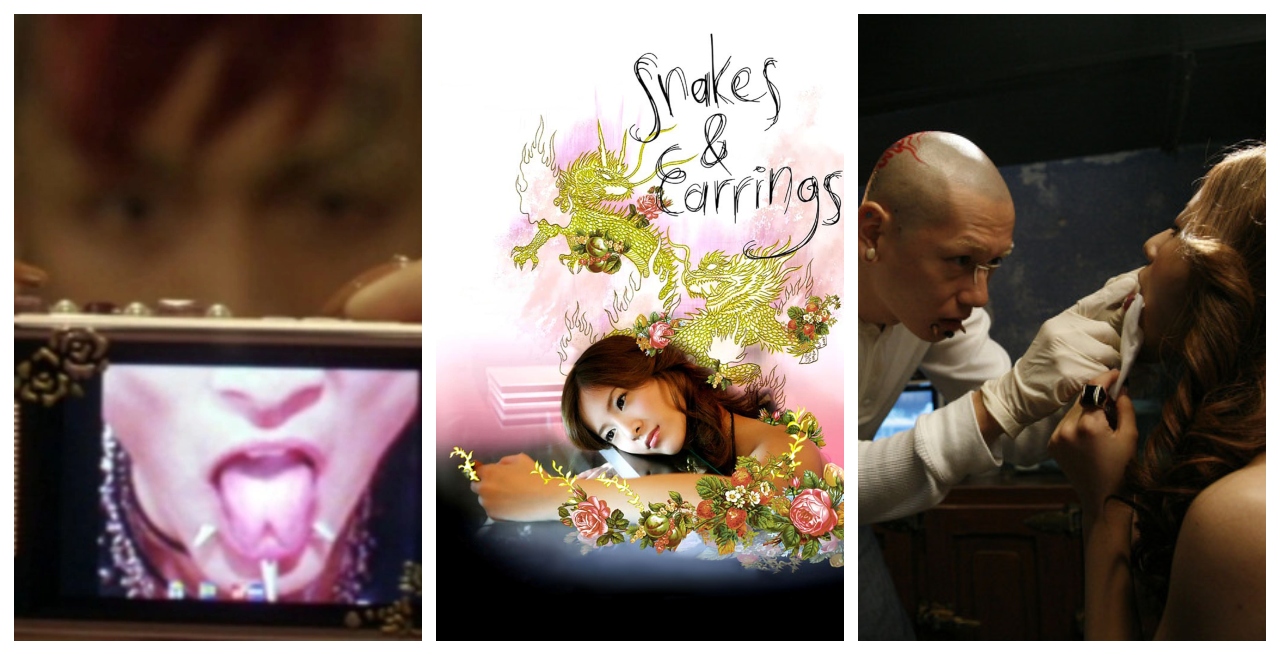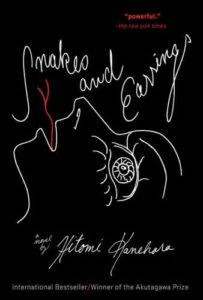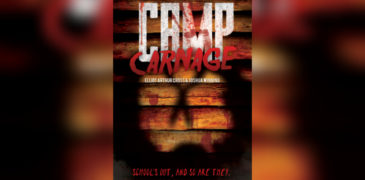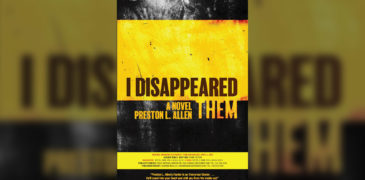
Have you heard about body modification? This practice involves the deliberate altering of the human anatomy or physical appearance. The extent of it varies on who you ask. However, in the mainstream world, these modifications usually consider implants, tattoos, piercings, and tongue splitting. The latter is precisely the catalyst for Hitomi Kanehara’s novel Snakes and Earrings (蛇にピアス Hebi ni Piasu).
Polemic, disturbing, and bleak, this work written in 2004 (and adapted into a film in 2008) encapsulates both the disaffection of the Japanese youth and the need of feeling something, even if it is only physical and emotional pain.

What’s the plot of Snakes and Earrings?
Snakes and Earrings tell the story of Lui, a directionless 19-year-old gyaru girl who meets a punk guy named Ama one night in a club. Despite seemingly being an odd match, Lui is smitten with him and his split tongue, while he is devoted to the point of clinginess to her.
Soon, Lui decides to also have her tongue split. In order to do so, she needs to begin the process of inserting progressively larger tongue studs, Ama takes her to Shiba, a piercing and tattoo artist. Lui and Ama feel instantly drawn to each other, mostly because they state from the very beginning their respective sadistic and masochistic tendencies. Eventually, and without Ama’s knowledge, they end up involved in a disturbing yet consensual sexual relationship.

Later, while walking to a train station one night, Lui, Ama, and Lui’s friend stumble upon some low-rank yakuza. After one of them harasses Lui, Ama goes ballistic and savagely attacks one of them. A few days after, Lui finds out the guy died because of his injuries, and the police are looking for the person responsible. Scared, disconnected, and numb from everything going on with her life, she starts seeking whatever makes her feel alive. Because of this, Lui continues to live a co-dependent relationship with Ama, seeks sexual pleasure with Shiba, and continues her path through body modification by getting also a tattoo that covers her entire back.
Lui’s toxic equilibrium reaches its end when Ama suddenly disappears. After looking for him everywhere, he is found dead. His corpse shows evidence of sexual torture, r*pe, and strangulation, which indicates that the culprit held some personal grudge against him. Not having him as an emotional crutch and with Shiba’s affections shifting to a romantic love she does not need, Lui starts to fall into a dark downward spiral.

Is Snakes and Earrings worth it?
If you can handle its themes, yes. Some aspects of the book did not age well but is still a must-read for Japanese literature fans due to its raw depiction of mental health since it is quite evident to the reader that Lui’s hectic behavior is a form of self-destruction. Curiously, piercings and tattoos are a tangential way to express this tendency. If anything, Ama’s suffocating love and Shiba’s sadism are the primary sources of the pain she desperately craves and needs to feel alive again artificially. In a way, they are more violent to her body and soul than any body modification.

When this book was released, there was a huge craze about the author. Hitomi Kanehara was only 21 years old when she wrote it and she drew her protagonist from her own experiences. The press often criticized her supposed “glamorized” and “vapid” themes and were obsessed with seeing her next disruption just for the sake of it.
However, as Ryu Murakami once stated, Snakes and Earrings is a radical depiction of the time and clearly describes what goes on in the minds of young women today. Imperfect as it may be, Kanehara dared to show the dark side of youth, and commodification was a daring act that remains relevant even today.
More Book Reviews
As if conversion therapy isn’t already scary enough, try going through that with a killer coming after the campers one by one. That’s the premise for this slasher novel by… Preston Allen’s 2024 novel, I Disappeared Them is a riveting exploration of human complexity, blending elements of mystery, psychological depth, and societal commentary into a compelling narrative. It evokes disgust… As fall approaches, it’s the perfect time to slow down, grab a cup of tea or spiced coffee, a cozy blanket, and settle in with a good read. There aren’t… Hey there GoH fam! Dustin here again with another edition of ‘Recent Reads’, where I dive into my thoughts on three books I’ve lately read. I’m keeping things bloody with a… From Reddit’s NoSleep forum to Mr. Creepypasta’s reading on Youtube to now, Stolen Tongues has gained its following of horror fans during its development. When I first heard Stolen Tongues… Hollywood horrors, entities from beyond the grave, and body horror mutations: these can be found within my recent reads which I’ll be sharing with you, dear reader. For this edition…Camp Carnage Book Review: Elliot Arthur Cross and Joshua Winning’s Conversion Camp Slasher
I Disappeared Them: A Novel (2024) Book Review – The Inner Workings of the Mind of a Serial Killer
Grimoire of Horror Halloween Season Book Recommendations
Recent Reads: Let the Right One In, Disco Deathtrap, There’s Someone Inside Your House
Stolen Tongues by Felix Blackwell (2017) – Book Review
Recent Reads: Coldheart Canyon, Scry for Help, Wilder Girls
Hi everyone! I am Javi from the distant land of Santiago, Chile. I grew up watching horror movies on VHS tapes and cable reruns thanks to my cousins. While they kinda moved on from the genre, I am here writing about it almost daily. When I am not doing that, I enjoy reading, drawing, and collecting cute plushies (you have to balance things out. Right?)





